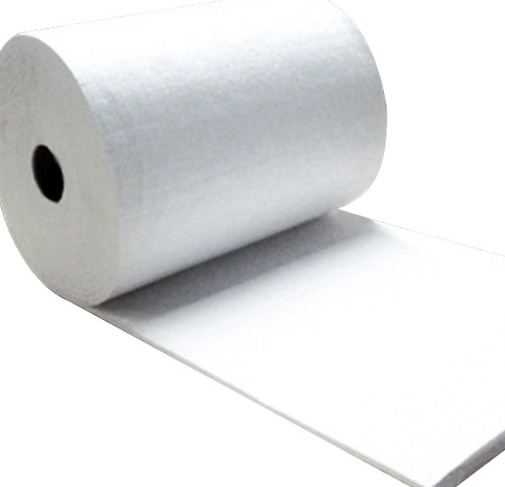Ceramic fiber paper, as a widely used high-temperature insulation material in the industrial field, has shown its irreplaceable value in many application scenarios by virtue of its unique performance characteristics. This article will objectively analyze the main advantages and limitations of ceramic fiber paper to help users better understand this special material.
Analysis of significant advantages
The most prominent advantage of ceramic fiber paper is its excellent high temperature resistance. High-quality ceramic fiber paper can withstand high temperatures of more than 1000 ℃ for a long time, and can even withstand extreme temperatures of 1260 ℃ for a short period of time. This characteristic makes it an ideal choice of insulation material for high-temperature equipment. Secondly, ceramic fiber paper has a very low thermal conductivity (usually 0.06-0.12W/m-K), which is significantly better than traditional asbestos materials. In addition, ceramic fiber paper is soft, can be cut and folded at will, the construction is very convenient, especially suitable for complex shapes of equipment insulation needs.
Environmental Protection
Modern ceramic fiber paper has obvious advantages in environmental protection. Compared with traditional thermal insulation materials, ceramic fiber paper does not contain asbestos and other harmful substances, in line with ROHS environmental standards. Its biological solubility is also better than ordinary glass fiber, more friendly to the environment and human body. At the same time, ceramic fiber paper production process energy consumption is relatively low, reflecting the green manufacturing concept. These characteristics make ceramic fiber paper a new type of insulation material that meets modern environmental requirements.

Analysis of use limitations
Ceramic fiber paper also has some use limitations. First of all, its mechanical strength is relatively low, and it is easy to break when subjected to large pressure. Secondly, when exposed to high temperatures for a long period of time, ceramic fiber paper will experience slight shrinkage and hardening. In addition, without special treatment of ceramic fiber paper wind erosion resistance is weak, in the high-speed airflow environment will shorten the service life. These characteristics require users to pay special attention to application scenarios when selecting and using ceramic fiber paper.
Cost-benefit assessment
From the economic point of view, although the unit price of ceramic fiber paper is higher than that of common heat insulation materials, its comprehensive use cost is more advantageous. Due to the long service life of ceramic fiber paper, maintenance is simple, and can significantly reduce the energy consumption of equipment, but more economically beneficial in the long term. Especially for high-temperature conditions, the use of ceramic fiber paper can effectively reduce heat loss, usually in 6-12 months through energy savings to recover material costs.
Comprehensive view, ceramic fiber paper with its excellent high temperature resistance, excellent thermal insulation effect and good environmental characteristics, in the field of industrial thermal insulation occupies an important position. Although there are mechanical strength and other limitations, but through reasonable selection and use, these shortcomings can be effectively avoided. For most high-temperature insulation needs, ceramic fiber paper is still a cost-effective solution.


